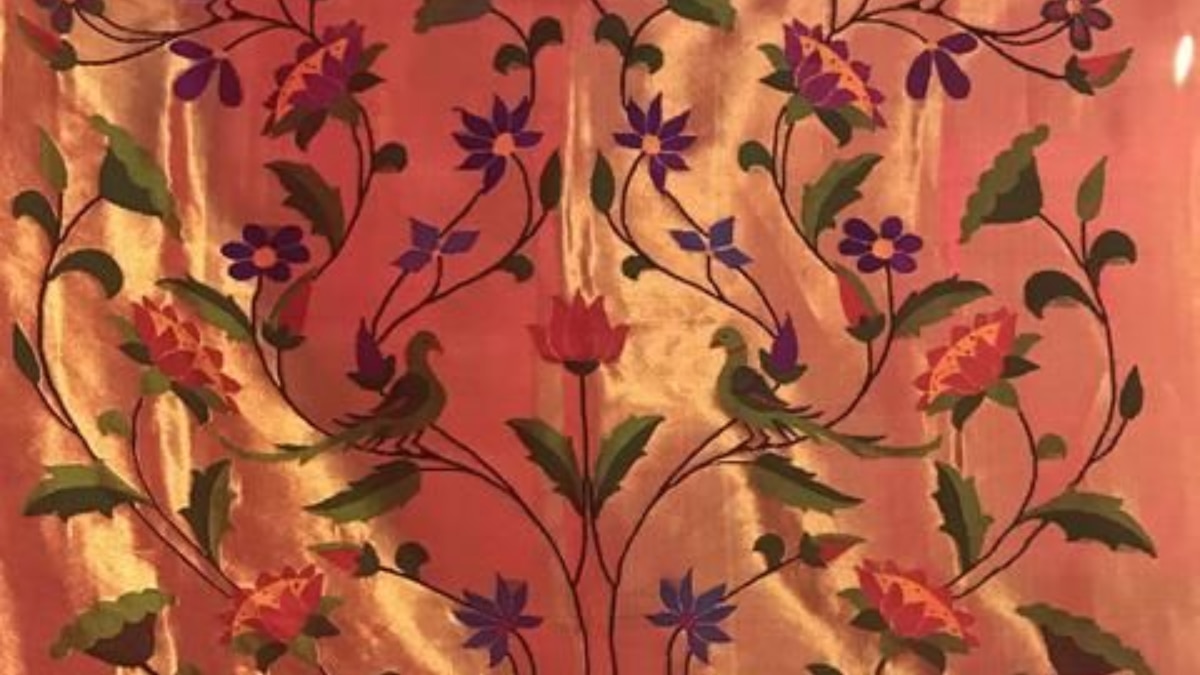Paithani Sarees: What Is This Royal Weave All About? Know How To Identify An Original One
Originating from the ancient city of Pratishthan, now Paithan ,it was previously called 'Pratishthani', a name which has now evolved to 'Paithani'.

Paithani saree, an exquisite Maharashtrian piece, is known for its opulent silk, elaborate patterns, and vibrant colours. Traditionally cherished by brides, this saree speaks both about royalty and contemporary fashion. The origin of Paithani dates back to the 2nd century BC during the Satvahana Dynasty and is a fabric once woven with pure gold alongside cotton and silk. This luxurious textile captivated everyone, even the Greco-Romans back then, who traded gold for its splendorous allure.
Originating from the ancient city of Pratishthan, now Paithan, it was previously called 'Pratishthani', a name which has now evolved to 'Paithani'. Referred to as the 'Dev vastra' or fabric of the Gods, its historical significance also holds a place in Hindu and Buddhist scriptures.
Flourishing under the patronage of the Peshwas in the 18th century, especially admired by Madhavrao Peshwa, Paithani continues to speak of royalty, embodying a timeless elegance even today.
The Royal Weave:
As an essential part of Maharashtra's culture, women wear these sarees on special occasions such as weddings and religious ceremonies. Additionally, these sarees are gaining popularity in the western and southern regions of India, as more people outside of Maharashtra appreciate their exquisite craftsmanship and cultural significance.
Shri Balkrishna Namdev Kapse, Founder of Kapse Paithani said, "The Paithani saree is weaved using top quality silk and pure gold zari. These sarees feature detailed patterns inspired by nature, each telling stories of tradition and craftsmanship. Representing beauty, grace, and majesty, the peacock is a prominent motif in Paithani design. Taking between 6 to 24 months to create, a genuine Paithani saree weighs up to 900gms, with 500gms of silk threads and 250gms of zari intricately woven into its fabric."

How You Can Identify An Original Paithani Saree:
Identifying an original Paithani saree can be tricky, but here are some tips shared by Ashita Singhal, founder of Paiwand:
- Look for the pallu design: Hand-woven fabrics can be identified from the selvage, which typically has holes from pinning the fabric to keep it straight. The selvage is never perfectly straight and often has holes, serving as a marker for hand-woven fabrics. Authentic Paithani sarees have unique pallu designs that are handwoven with precision and detail.
- Check the borders: Original Paithani sarees have intricately woven borders with motifs that are characteristic of the region. Hand-woven pieces exhibit clear motifs on both the front and back, indicating their authenticity.
- Look for imperfections: Look for imperfections rather than perfection when identifying hand-woven items. Original Paithani Sarees are dual in nature, with one colour for the weft and another for the warp.
- Inspect the Fabric: When exposed to light, these sarees reflect different colours and patterns from various angles, aiding in their identification. Original Paithani Sarees are dual in nature, with one colour for the weft and another for the warp.
- Examine the Zari Work: Genuine Paithani sarees feature intricate zari work, which is done using real gold or silver threads.
ALSO READ: Madhubani Sarees: Peacock To Fish- Know Different Motifs Present And Tips To Identify A Pure Piece
Evolution Of Paithani Sarees Over Time:
Related Video
Union Budget 2024: Nirmala Sitharaman Reaches Parliament Ahead Of Budget Presentation Today | ABP News





































